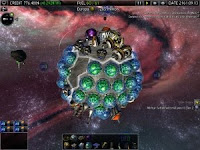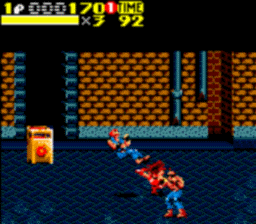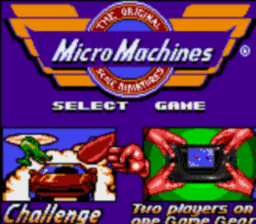So I've posted what I liked about the game. Now for part 2 - the bad aspects of the game usability/user experience. Just to be clear, the game is so good I feel I'm really having to search for improvements. I can't wait to see what changes they make to Arkham Asylum 2.
Fights can end anti-climatically
So the combat is great fun. Engaging, flexible, reactive, etc. But there is a small problem. Each fight ends with a slow-mo, alternative angle of the final puck/kick/throw/etc. But about 50% of the time this dramatic view shows Batman doing a silly finishing move, such as kicking someone in the shin, or even missing the person completely! The slow-mo gives the player a long time to watch the final move... and see any flaws in the impact mechanics/silly underwhelming final moves.
The 'detective mode' is too powerful
A problem I find with modern games is that it's harder and harder to see what can be interacted with, and what is just decoration. There have been a variety of different attempts to highlight 'interactive' objects. The tradition is to display the items in a different colour, make the items glow/glimmer or visually highlight the items in some other way. A good example is Bioshock - usable items have a shiny glow/glimmer. The problem being that this adds an artificiality to the game ("real bananas don't shine like that!").
Batman AA gets around this by offering a 'detective mode', where interactive objects glow orange. This ensures that the game world can remain 'pure' (no glowing objects here!) but means the detective mode is too useful. I spent most of the game with it on, meaning I missed out on the graphics of the normal mode.
Batman AA could supplement the 'detective mode' on top of the normal mode (so interactive objects can still glow and stand out, but the rest of the images doesn't loose it's colour). I'm essentially suggesting a combination (or at least a much closer connection) between the normal and detective mode.
Other detective mode issues
The 'detective mode' is so powerful, I played most of the game with it on. This lead to 2 problems:
- It's hard to tell wardens (friendly) and inmates (not so friendly) apart. As a result I found myself attempting to creep up and knock out wardens throughout the game. Not a major problem, but it just pulled me out of the game-world briefly. This could easily be fixed with different colours for friendly and hostile people. The game already does this to a lesser degree, inmates with guns are coloured red, so unarmed inmates could be yellow and guards green or blue.
- It's hard to tell when there's a wall between Batman and the person. As with the warden identification problem, I found myself attacking a wall (pretty embarrassing, as I was showing the game off to a friend at the time). Once more, it's not a significant problem... It just once more acts as a reminder that you're playing a game. The game could indicate to the player when there's a barrier between Baman and a person by using a darker/lighter shade of colour.
I had 2 issues with the equipment offered in Batman. I loved the pace they introduced more and more complex equipment as you move through the game (even updating older equipment to keep you existing gear fresh). However I had 2 (very similar) issues with the equipment controls:
- Selecting another piece of equipment when under pressure was surprisingly tough. For far too many fights I tried to boobytrap a downed inmate with some rope or the electronic hacker because I failed to pick the explosive from the radial menu. The game could pause while the player makes their selection. Alternatively reduce the amount of time the player must hold a direction in the radial menu to indicate what equipment they need.
- Related to this, there's no information on what equipment is selected. This leads to the same problem as above where I tried to use the wrong equipment at the wrong time for a situation - I just didn't realise I was using the wrong item. This may be a deliberate design choice - to save screen space/reduce clutter and/or because you don't have a HUD in real life. If not I would suggest adding a small transparent icon of the item. This should be placed in the corner of the screen, where the radial menu appears.
In the previous post, I raved about the help offered when you struggled in set pieces, how the game tells you the best strategy to avoid the issue next time. Unfortunately the help isn't infallible. There are various points in the game where it's not clear where to go/what to next. I was wandering about in 1 corridor for about 5 minutes before giving up, and reading online that I missed a grate in the ceiling all along!
The developers should adjust the points where people regularly got stuck in playtesting and adjust the layout a little to accommodate this. They could find these points by defining the average time a player should get to the next section, and comparing it to the actual playtesting average. Alternatively the game could offer hints from the girl on the radio - e.g. "are there any vents nearby?"
Quite a bit of repeats in environments
Another minor issue... again as there's so little for me to talk about here. A lot of the detail in the environments (furniture, files, etc) are repeats. Not normally a problem, but one of the details is a photo. This photo crops up over and over again all over the asylum. Either this person is the asylum equivalent of Jedward (for any non-British readers, best not go there) or they need more pictures. I've picked up on the pictures because faces are so much more memorable than tables, folders or anything else.
Batman's character
A minor issue is Batman's character. I enjoyed the game's story itself, good ol' fashioned trash. But through it all Batman himself was a little... 2 dimensional. Like the recent films all he does is grunt in a gruff voice to everyone he speaks to about how they should stand back and let Batman fix it. There's no uncertainty, no remorse, no... character. Batman's just essentially brought Joker into this island to cause havoc, killing many guards in the process - how does he feel about that???
And that's your lot! All in all a great game, with some very minor game usability issues that need adjustment. Personally? The most polished game I've seen in quite some time.





















